Dronelost.com – We will compare two of the most popular types of drones: FPV drones vs regular drones. We know drones are unique devices that can fly in the sky and capture stunning images and videos from different angles.
Drones are also fun to operate and can provide a thrilling experience for hobbyists and professionals. But did you know that there are different beetween FPV drones vs regular drones? And that they have additional features, advantages, and disadvantages?
We will explain FPV drones vs regular drones, how they differ, and what they are good for. We will also give you some tips on how to choose the best drone for your needs and preferences.
By the end of this blog post, you will have a clear understanding of the differences between FPV drones vs regular drones, and you will be able to make an informed decision on which one to buy or use. So, let’s get started!
What is an FPV Drone?
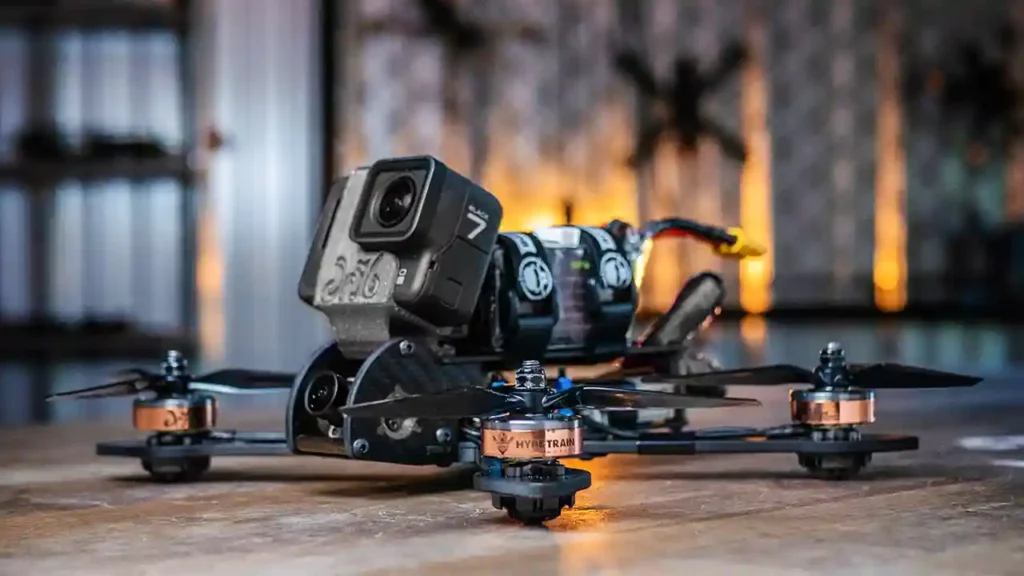
FPV stands for First Person View, which means that you can see what the drone sees through a pair of goggles or a screen. This gives you a more immersive and realistic feeling of flying, as if you were in the cockpit of the drone. FPV drones are also known as racing drones, because they are often used for high-speed and acrobatic flights.
FPV drones are usually custom-built by the users, who can choose and modify the components according to their preferences and needs. FPV drones require more skill and practice to fly, as they are more responsive and agile than regular drones.
They also have less safety features, such as obstacle avoidance or return to home, which means that you have to be more careful and attentive when flying them.
FPV drones are ideal for those who want to experience the thrill and excitement of flying, and who are willing to invest time and money in building and maintaining their own drones. FPV drones are also great for capturing dynamic and cinematic footage, especially for sports and action scenes.
What is a Regular Drone?
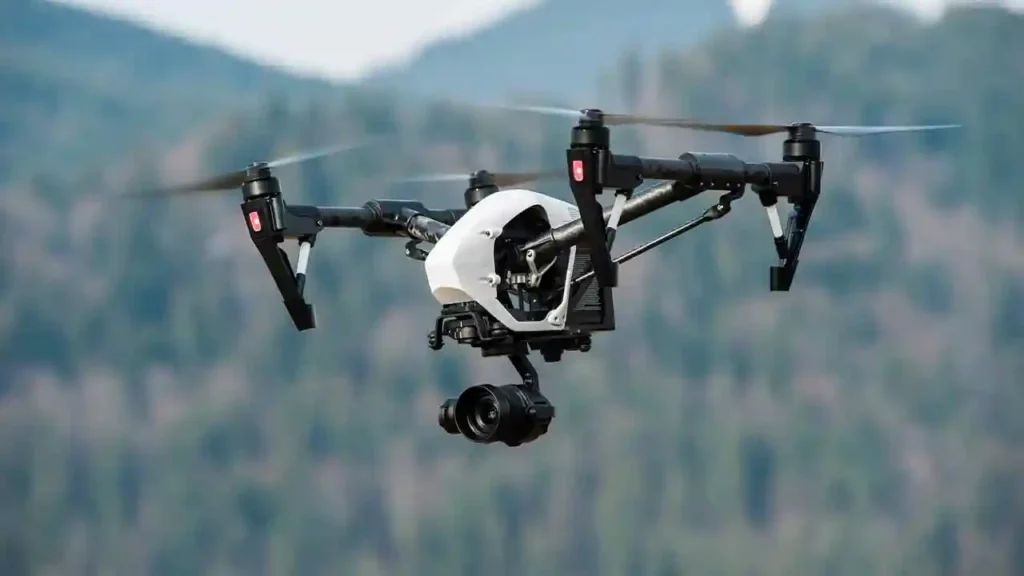
A regular drone is what most people think of when they hear the word drone. It is a ready-to-fly device that comes with a built-in camera, a gimbal, sensors, and software. A regular drone can be controlled by a handheld remote controller, a smartphone, or a tablet. A regular drone can also transmit live images and videos to the screen of your device, but it is not as immersive as FPV.
Regular drones are designed to be easy and safe to fly, even for beginners. They have many intelligent and innovative features, such as hovering, photography, filming, and various modes and functions. They also have safety features, such as obstacle avoidance, GPS positioning, and return to home, which prevent the drone from crashing or getting lost.
Regular drones are ideal for those who want to take photos and videos from the sky, and who want to enjoy a simple and convenient flying experience. Regular drones are also suitable for various purposes, such as recreation, education, business, and social media.
FPV Drones Vs Regular Drones, Pros and Cons
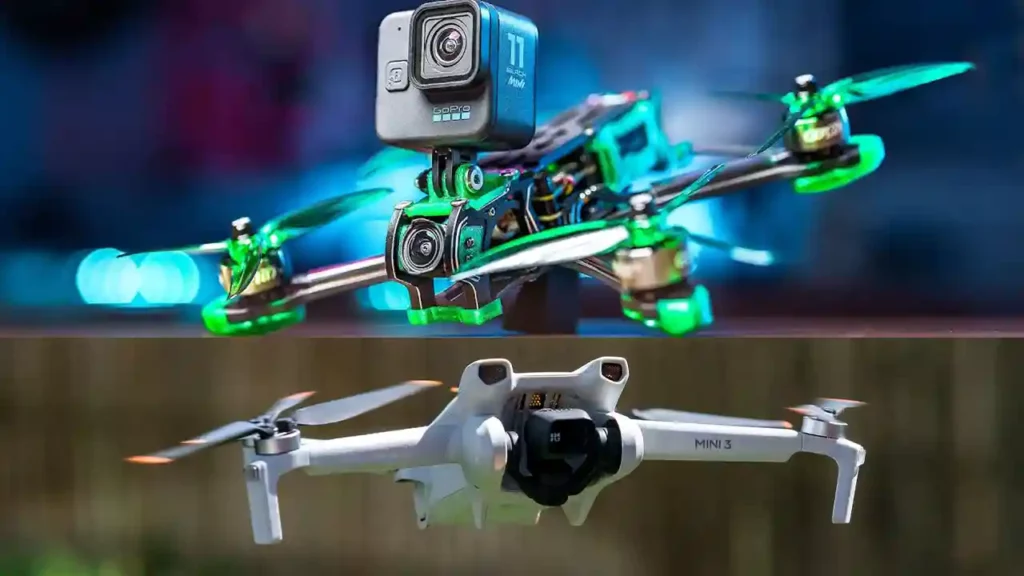
FPV Drones
FPV drones have many advantages and disadvantages, depending on your perspective and expectations. Here are some of the pros and cons of FPV drones:
Pros:
- FPV drones are more fun and exciting to fly, as they give you a more immersive and realistic feeling of flying.
- FPV drones are more responsive and agile, as they can perform high-speed and acrobatic flights.
- FPV drones are more customizable and modifiable, as you can choose and change the components according to your preferences and needs.
- FPV drones are more affordable and accessible, as they are cheaper and easier to buy or build than regular drones.
Cons:
- FPV drones are more difficult and risky to fly, as they require more skill and practice to operate.
- FPV drones are more vulnerable and fragile, as they are more likely to crash or break than regular drones.
- FPV drones are more limited and restricted, as they have shorter flight time, range, and signal than regular drones.
- FPV drones are more regulated and prohibited, as they are subject to more rules and laws than regular drones.
Regular Drones
Regular drones also have many advantages and disadvantages, depending on your perspective and expectations. Here are some of the pros and cons of regular drones:
Pros:
- Regular drones are more easy and safe to fly, as they have more automated and intelligent features, such as hovering, obstacle avoidance, and return to home.
- Regular drones are more stable and reliable, as they have more durability and quality than FPV drones.
- Regular drones are more versatile and functional, as they have more capabilities and options, such as photography, filming, and various modes and functions.
- Regular drones are more professional and impressive, as they can produce more stunning and high-quality images and videos than FPV drones.
Cons:
- Regular drones are less fun and exciting to fly, as they give you a less immersive and realistic feeling of flying.
- Regular drones are less responsive and agile, as they can perform slower and smoother flights.
- Regular drones are less customizable and modifiable, as you have less choice and control over the components than FPV drones.
- Regular drones are more expensive and exclusive, as they are more costly and harder to buy or build than FPV drones.
Examples of FPV Drones vs Regular Drones
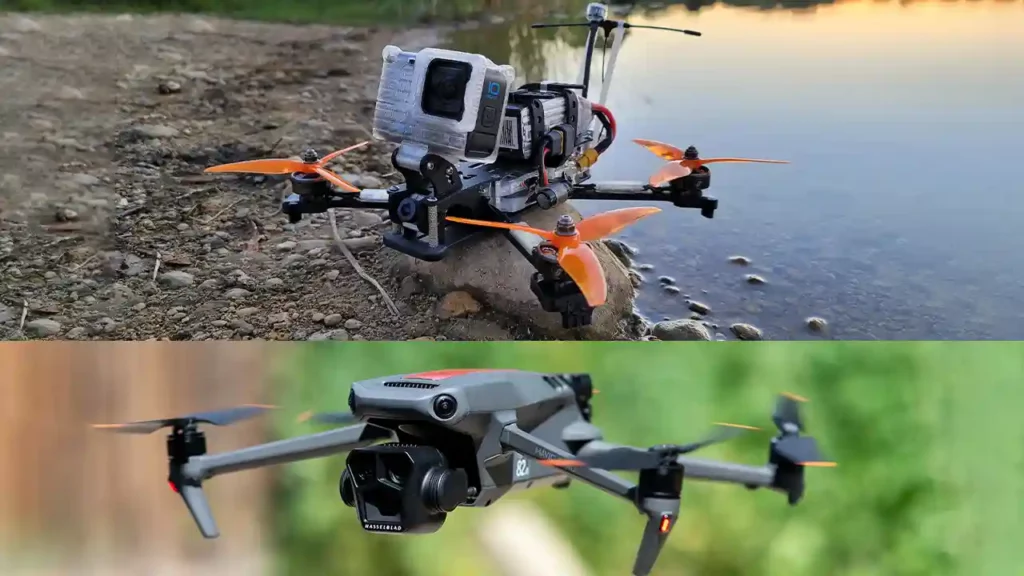
To give you a better idea of the differences between FPV drones and regular drones, here are some examples of the most popular and best-selling models of each type:
FPV Drones Type
- EMAX Tinyhawk II: This is a small and lightweight FPV drone that is ideal for beginners and indoor flying. It has a durable and flexible frame, a powerful and efficient motor, and a high-quality camera and video transmitter. It comes with everything you need to fly, including a pair of goggles, a remote controller, a battery, and a charger.
- iFlight Nazgul5: This is a medium-sized and powerful FPV drone that is ideal for intermediate and outdoor flying. It has a strong and sleek frame, a fast and smooth motor, and a sharp and clear camera and video transmitter. It comes with almost everything you need to fly, except for a pair of goggles, a remote controller, and a battery.
- DJI FPV: This is a large and advanced FPV drone that is ideal for experienced and professional flying. It has a robust and elegant frame, a rapid and agile motor, and a superb and immersive camera and video transmitter. It comes with everything you need to fly, including a pair of goggles, a remote controller, a battery, and a charger.
Regular Drones Type
- DJI Mini 2: This is a small and lightweight regular drone that is ideal for beginners and indoor flying. It has a compact and foldable design, a long and stable flight time, and a high-resolution and gimbal-stabilized camera. It comes with everything you need to fly, including a remote controller, a battery, and a charger.
- DJI Mavic Air 2: This is a medium-sized and powerful regular drone that is ideal for intermediate and outdoor flying. It has a sleek and foldable design, a fast and smooth flight performance, and a 4K and gimbal-stabilized camera. It comes with everything you need to fly, including a remote controller, a battery, and a charger.
- DJI Phantom 4 Pro V2.0: This is a large and advanced regular drone that is ideal for experienced and professional flying. It has a robust and elegant design, a rapid and agile flight performance, and a 4K and gimbal-stabilized camera. It comes with everything you need to fly, including a remote controller, a battery, and a charger.
How to Fly FPV Drones vs Regular Drones?
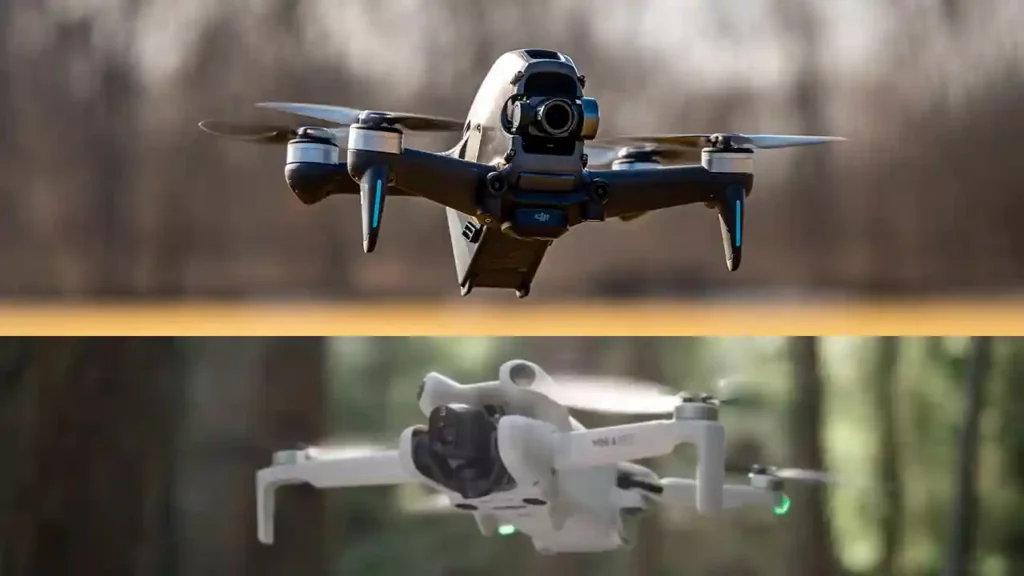
Flying FPV drones and regular drones requires different skills and techniques, as they have different controls and features. Here are some tips on how to fly FPV drones and regular drones:
How to Fly FPV Drones
- To fly an FPV drone, you need to wear a pair of goggles or look at a screen that shows the live video feed from the drone’s camera. This allows you to see what the drone sees, and to control it accordingly.
- To control an FPV drone, you need to use a remote controller that has two joysticks and several switches and buttons. The left joystick controls the throttle and the yaw, while the right joystick controls the pitch and the roll. The switches and buttons can be used to adjust the settings and modes of the drone, such as the flight mode, the camera angle, and the video channel.
- To fly an FPV drone, you need to practice a lot and master the basic maneuvers, such as taking off, landing, hovering, turning, and flying forward and backward. You also need to learn how to fly in different flight modes, such as angle mode, horizon mode, and acro mode. Angle mode and horizon mode are more stable and beginner-friendly, as they limit the angle and the speed of the drone. Acro mode is more advanced and challenging, as it allows the drone to perform unlimited flips and rolls.
- To fly an FPV drone, you need to be aware of the surroundings and the potential hazards, such as trees, buildings, wires, and birds. You also need to follow the rules and regulations of the area where you fly, such as the altitude, the distance, and the frequency. You also need to respect the privacy and the safety of other people and animals, and avoid flying over or near them.
How to Fly Regular Drones
- To fly a regular drone, you need to look at the drone and the screen of your device that shows the live video feed from the drone’s camera. This allows you to see the drone and the surroundings, and to control it accordingly.
- To control a regular drone, you need to use a remote controller, a smartphone, or a tablet that has a joystick, a slider, or a touch screen. The joystick or the slider controls the throttle and the yaw, while the touch screen controls the pitch and the roll. The device can also be used to adjust the settings and modes of the drone, such as the camera settings, the flight modes, and the functions.
- To fly a regular drone, you need to follow the instructions and the tutorials that come with the drone, and learn how to use the features and the functions of the drone, such as hovering, photography, filming, and various modes and functions. Some of the most common and useful modes and functions are follow me, orbit, waypoint, gesture, and panorama.
- To fly a regular drone, you need to be aware of the battery level and the signal strength of the drone, and make sure that they are sufficient for the flight. You also need to use the safety features of the drone, such as obstacle avoidance, GPS positioning, and return to home, which prevent the drone from crashing or getting lost.
How to Maintain FPV Drones vs Regular Drones?
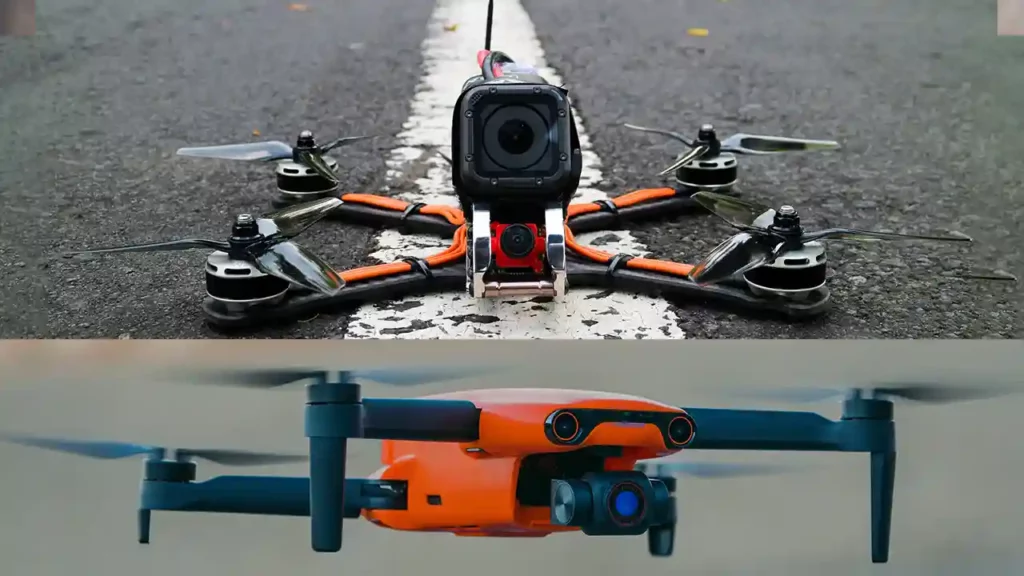
Maintaining FPV drones and regular drones is important to keep them in good condition and to extend their lifespan. Here are some tips on how to maintain FPV drones and regular drones:
- FPV Drones:
- To maintain an FPV drone, you need to clean it regularly and remove any dirt, dust, or debris that may affect its performance. You can use a soft brush, a cloth, or a compressed air can to clean the drone.
- To maintain an FPV drone, you need to check it frequently and fix any damage or malfunction that may occur. You can use a screwdriver, a soldering iron, or a multimeter to repair the drone. You also need to have some spare parts, such as propellers, motors, ESCs, and cameras, in case you need to replace them.
- To maintain an FPV drone, you need to store it properly and protect it from extreme temperatures, humidity, and sunlight. You can use a case, a bag, or a box to store the drone. You also need to remove the battery from the drone and store it separately in a fireproof and ventilated place.
- To maintain an FPV drone, you need to charge it correctly and safely. You need to use a compatible and quality charger and a balance board to charge the battery. You also need to monitor the charging process and avoid overcharging or undercharging the battery.
- Regular Drones:
- To maintain a regular drone, you need to clean it regularly and remove any dirt, dust, or debris that may affect its performance. You can use a soft brush, a cloth, or a compressed air can to clean the drone.
- To maintain a regular drone, you need to check it frequently and contact the manufacturer or the seller if there is any damage or malfunction that may occur. You can use the app or the software that comes with the drone to update the firmware and calibrate the sensors of the drone. You also need to have some spare parts, such as propellers, batteries, and gimbals, in case you need to replace them.
- To maintain a regular drone, you need to store it properly and protect it from extreme temperatures, humidity, and sunlight. You can use the case, the bag, or the box that comes with the drone to store the drone. You also need to keep the battery in the drone and store it in a cool and dry place.
- To maintain a regular drone, you need to charge it correctly and safely. You need to use the charger and the cable that come with the drone to charge the battery. You also need to follow the instructions and the indicators that show the charging status and the battery level of the drone.
How to Choose the Best FPV Drone and Regular Drone for You?
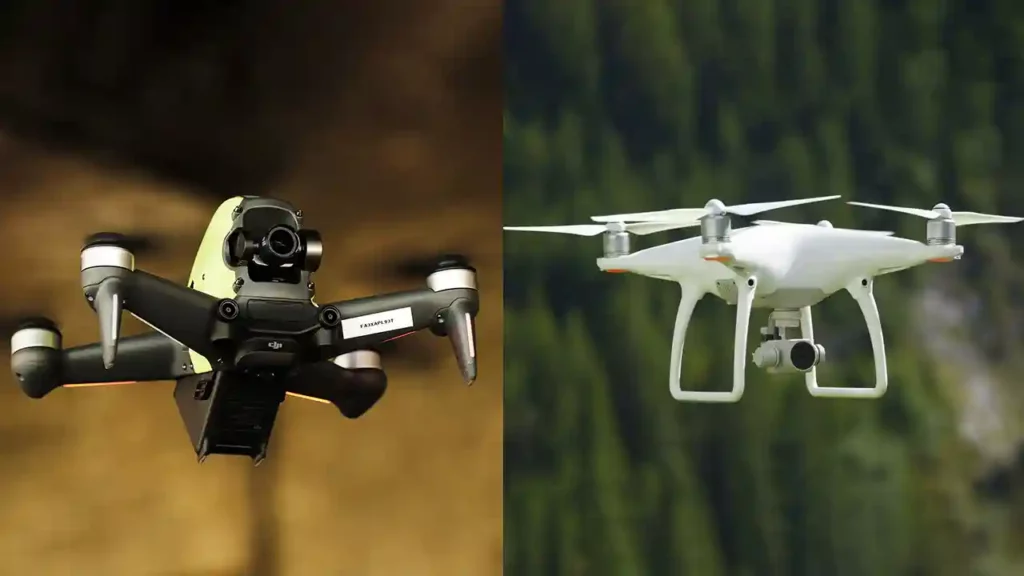
Choosing the best FPV drone and regular drone for you depends on your personal preferences and needs. Here are some factors that you should consider when choosing the best FPV drone and regular drone for you:
- Size and Weight: The size and weight of the drone affect its portability, performance, and regulation. Smaller and lighter drones are more portable and agile, but they may have less flight time, range, and stability. Larger and heavier drones are less portable and agile, but they may have more flight time, range, and stability. Smaller and lighter drones are also less regulated and restricted, as they may not require registration or license to fly. Larger and heavier drones are more regulated and restricted, as they may require registration or license to fly.
- Camera and Video: The camera and video of the drone affect its quality and functionality. Higher-resolution and gimbal-stabilized cameras and videos produce more stunning and high-quality images and videos, but they may also consume more battery and memory. Lower-resolution and non-gimbal-stabilized cameras and videos produce less stunning and high-quality images and videos, but they may also consume less battery and memory. Higher-resolution and gimbal-stabilized cameras and videos are also more versatile and functional, as they can offer more capabilities and options, such as zoom, focus, and various modes and functions. Lower-resolution and non-gimbal-stabilized cameras and videos are less versatile and functional, as they can offer less capabilities and options.
- Features and Functions: The features and functions of the drone affect its ease and safety. More automated and intelligent features and functions make the drone easier and safer to fly, but they may also limit the control and the fun of the drone. Less automated and intelligent features and functions make the drone more difficult and risky to fly, but they may also increase the control and the fun of the drone. More automated and intelligent features and functions are also more suitable for photography and videography, as they can offer more stability, quality, and versatility. Less automated and intelligent features and functions are more suitable for racing and freestyle flying, as they can offer more speed, agility, and maneuverability.
- Price and Value: The price and value of the drone affect its affordability and accessibility. More expensive and exclusive drones offer more quality and performance, but they may also be harder to buy or build. Less expensive and accessible drones offer less quality and performance, but they may also be easier to buy or build. More expensive and exclusive drones are also more professional and impressive, as they can produce more stunning and high-quality images and videos. Less expensive and accessible drones are more fun and exciting, as they can provide more immersive and realistic flying experience.
Choosing between FPV drones and regular drones depends on your budget, skill level, purpose, and preference. We hope that this blog post has helped you to understand the differences between FPV drones and regular drones, and to make an informed decision on which one to buy or use.
